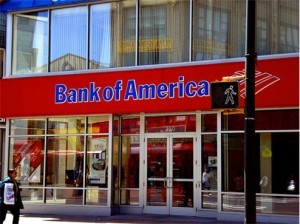Contact: 318.751.8540/dbedesigns@gmail.com
Sunday, February 26, 2012
Bohemian Bottles: The Sculptural Collection
Online auction through March 4, 2012 at "Artwork Clearance" Facebook page.
All pieces created by DBE.
Inquiries? Email: DBEDesigns@gmail.com
Friday, February 24, 2012
"Bohemian Bottles: The Sculptural Series" online artwork auction
 |
| Click here to join the auction! |
When: THIS Sunday (2/26/12) at noon, thru NEXT Sunday (3/4/12) at noon.
Where: Artwork Clearance FB page
How:
1. Go to the Artwork Clearance FB page
2. Select the "Bohemian Bottles: Sculptural Series" photo album
3. Browse the artwork, and decide which pieces you LOVE
4. Place and/or raise your bid in the "Comments" section under the photo of the artwork you LOVE
5. Check back often - bidding gets HEATED near the end of the auction
6. Collect your winnings when the auction is over
This auction will last ONE WEEK ONLY.
Don't miss out!
(See the original Bohemian Bottles series here)
Top 6 Corporations to Occupy
By: Suzanne Merkelson 2.22.2012 at 12:13 PM
The Occupy Wall Street movement has permeated across the country – the 99 percent has changed the dialogue of the 2012 election and beyond. As organizers start to regroup and set their sights on the spring, groups in 34 cities have agreed to “a day of nonviolent direct action” on Feb. 29 against corporations they accuse of working against the public interest.
We nominated six we think deserve an Occupation (some are already on an initial target list):

1. Corrections Corporation of America
Headquarters: Nashville, TN
Profiting off keeping people locked away is certainly a siren call for protesting the practices of Corrections Corporation, the country’s largest for-profit prison company. The corporation has recently sought to purchase prisons in 48 different states. But this offer will do little to lessen the long-term strain on state coffers. Even worse, the corporation stipulates that state prison populations must remain at least 90 percent full – not something any democracy should ever strive to pursue. To complicate matters, Corrections Corporation has deep pockets and uses its considerable might to lobby, finance, and otherwise influence politicians across the country. Corrections Corporation, based in Nashville, manages over 60 facilities in 19 states and D.C.
Meanwhile, the Occupy movement is already starting to join up with prison reformers, who seek to change the conditions that make American prisoners the most abused population in our society. Hundreds of protesters gathered at California’s state-run San Quentin prison this week to demonstrate against high incarceration rates and deplorable living conditions for inmates. Recognizing that prison reformers and Occupiers share similar goals, one Occupier, activist Barbara Becnel, quoted a message she said came from San Quentin death row prisoner Kevin Cooper: “We have merged the prison rights movement with the Occupy movement. The 99 percent has to be concerned about the bottom 1 percent.”
That should go for the bottom 1 percent who are under the jurisdiction of companies like Corrections Corporation.

2. Exxon
Headquarters: Irving, TX
ExxonMobil raked in huge profits last year. The oil company’s profits increased by 31 percent in 2011 as compared with 2010. But somehow, this happened while its oil and gas production fell – by 5 percent over that same period. So how does Exxon make more money while producing less oil and gas?
Tax breaks.
Exxon paid an effective tax rate of 17.6 percent, which as the Center for American Progress points out, is 3 percent less than what the average American family paid in taxes. Exxon and other big oil companies don’t pass on the benefits of these tax breaks to consumers. Instead, as CAP writes, “their board members, executives, and shareholders are the ones that profit.”
So how do these oil companies like Exxon get to spend American tax dollars on themselves? By putting even more money into the political system.
Exxon joined four other oil companies in spending $65.7 million on lobbying to retain their tax breaks. For every $1 spent on lobbying, they received $30 in tax breaks, a 3,000 percent return. Additionally, Exxon and its brethren donated over $1.6 million in campaign contributions last year, further securing the policies they like in the future.
Exxon is especially dirty among the Big 5 oil companies. It lobbied for the Keystone XL pipeline and supported climate change denial campaigns, spending $16 million between 1998 and 2005 to such groups. That’s the wrong way to spend taxpayer provided subsidies. All of this is reason enough for some to have already called for an Occupation of Exxon.

3. General Electric
Headquarters: Fairfield, CT
GE is one of the world’s largest corporations, with 2010 profits of $14.2 billion ($5.1 billion of which came from U.S. operations). But how much did it pay in taxes that year?
Nothing.
In fact, as the New York Times reports, G.E. claimed a tax benefit of $3.2 billion. Furthermore, from 2008 to 2010, G.E. spent $84 billion lobbying the federal government, joining 30 other major corporations spending more on lobbying than on taxes.
In October, Occupiers recognized the symbolism behind G.E.’s exploitation of the tax system, and set out to demonstrate on CEO Jeff Immelt’s front lawn:

4. Monsanto
Headquarters: St. Louis, MO
This giant agricultural biotechnology company is already the focus of activist groups and for good reason. Not only is Monsanto the overwhelming leader in producing genetically engineered seeds used in the United States, it also actively works to squeeze out competitors and control seed prices. The company has also targeted small farmers with ruthless legal battles, essentially forcing them to use Monsanto-branded seeds. Because of these dirty practices, Monsanto was the target of an antitrust investigation last year.
Meanwhile, Monsanto has considerable pull within the U.S. government. Most notably, former Monsanto vice president Michael Tyler is now a senior advisor to the Food and Drug Administration. A petition has circulated recently demanded that the Obama Administration “cease FDA ties to Monsanto”:

5. Bank of America
Headquarters: Charlotte, NC
Even while he has criticized the bank for the debit card fee and engaged with the bank on mortgage settlement talks, President Obama has decided to accept the Democratic Party’s nomination for president in Bank of America Stadium in Charlotte, NC, in part to sell more skyboxes to moneyed donors.

6. Walmart
Headquarters: Bentonville, Ark.
This one might be a “Duh.” But Walmart is both deserving of an occupation and easy to occupy. Sure, the company’s Arkansas headquarters aren’t exactly easily accessible for Occupiers from across the country.
But Walmart’s thousands of stores nationwide are an easy target for citizens concerned with the company’s standard-setting low wages, labor issues, and steamrolling of local businesses. Moreover, while the corporation had long ago inserted itself in rural America, it now has its sites set on the country’s cities.
Walmart plans to open four stores in Washington, DC, for example, and has its sites set on even more locations.
Occupy has already targeted Walmart, most notably to protest the company’s decision to cut health care benefits for full-time workers and eliminate insurance for new part-time workers. But with Walmart continuing to spend about $7.8 million a year lobbying on issues including taxes and labor, it’s worth a continued Occupation.
Source: RepublicReport.org
The Occupy Wall Street movement has permeated across the country – the 99 percent has changed the dialogue of the 2012 election and beyond. As organizers start to regroup and set their sights on the spring, groups in 34 cities have agreed to “a day of nonviolent direct action” on Feb. 29 against corporations they accuse of working against the public interest.
We nominated six we think deserve an Occupation (some are already on an initial target list):

1. Corrections Corporation of America
Headquarters: Nashville, TN
Profiting off keeping people locked away is certainly a siren call for protesting the practices of Corrections Corporation, the country’s largest for-profit prison company. The corporation has recently sought to purchase prisons in 48 different states. But this offer will do little to lessen the long-term strain on state coffers. Even worse, the corporation stipulates that state prison populations must remain at least 90 percent full – not something any democracy should ever strive to pursue. To complicate matters, Corrections Corporation has deep pockets and uses its considerable might to lobby, finance, and otherwise influence politicians across the country. Corrections Corporation, based in Nashville, manages over 60 facilities in 19 states and D.C.
Meanwhile, the Occupy movement is already starting to join up with prison reformers, who seek to change the conditions that make American prisoners the most abused population in our society. Hundreds of protesters gathered at California’s state-run San Quentin prison this week to demonstrate against high incarceration rates and deplorable living conditions for inmates. Recognizing that prison reformers and Occupiers share similar goals, one Occupier, activist Barbara Becnel, quoted a message she said came from San Quentin death row prisoner Kevin Cooper: “We have merged the prison rights movement with the Occupy movement. The 99 percent has to be concerned about the bottom 1 percent.”
That should go for the bottom 1 percent who are under the jurisdiction of companies like Corrections Corporation.

2. Exxon
Headquarters: Irving, TX
ExxonMobil raked in huge profits last year. The oil company’s profits increased by 31 percent in 2011 as compared with 2010. But somehow, this happened while its oil and gas production fell – by 5 percent over that same period. So how does Exxon make more money while producing less oil and gas?
Tax breaks.
Exxon paid an effective tax rate of 17.6 percent, which as the Center for American Progress points out, is 3 percent less than what the average American family paid in taxes. Exxon and other big oil companies don’t pass on the benefits of these tax breaks to consumers. Instead, as CAP writes, “their board members, executives, and shareholders are the ones that profit.”
So how do these oil companies like Exxon get to spend American tax dollars on themselves? By putting even more money into the political system.
Exxon joined four other oil companies in spending $65.7 million on lobbying to retain their tax breaks. For every $1 spent on lobbying, they received $30 in tax breaks, a 3,000 percent return. Additionally, Exxon and its brethren donated over $1.6 million in campaign contributions last year, further securing the policies they like in the future.
Exxon is especially dirty among the Big 5 oil companies. It lobbied for the Keystone XL pipeline and supported climate change denial campaigns, spending $16 million between 1998 and 2005 to such groups. That’s the wrong way to spend taxpayer provided subsidies. All of this is reason enough for some to have already called for an Occupation of Exxon.

3. General Electric
Headquarters: Fairfield, CT
GE is one of the world’s largest corporations, with 2010 profits of $14.2 billion ($5.1 billion of which came from U.S. operations). But how much did it pay in taxes that year?
Nothing.
In fact, as the New York Times reports, G.E. claimed a tax benefit of $3.2 billion. Furthermore, from 2008 to 2010, G.E. spent $84 billion lobbying the federal government, joining 30 other major corporations spending more on lobbying than on taxes.
In October, Occupiers recognized the symbolism behind G.E.’s exploitation of the tax system, and set out to demonstrate on CEO Jeff Immelt’s front lawn:
“In the land of the free they tax me but not G.E.!” read the invitation to take an hour bus ride to Immelt’s family home to join the protest, organized by liberal political party Connecticut Working Families. “General Electric made billions last year; they paid no taxes, outsourced thousands of jobs, and got over $3 billion in tax refunds! Join us on a free bus trip to G.E’s CEO’s front lawn to see how our friends in the 1% live.”Given all that and considering the fact that Immelt serves as chair of President Obama’s Council on Jobs and Competitiveness, even though during his tenure GE has steadily shipped jobs overseas, perhaps it’s time to re-Occupy.

4. Monsanto
Headquarters: St. Louis, MO
This giant agricultural biotechnology company is already the focus of activist groups and for good reason. Not only is Monsanto the overwhelming leader in producing genetically engineered seeds used in the United States, it also actively works to squeeze out competitors and control seed prices. The company has also targeted small farmers with ruthless legal battles, essentially forcing them to use Monsanto-branded seeds. Because of these dirty practices, Monsanto was the target of an antitrust investigation last year.
Meanwhile, Monsanto has considerable pull within the U.S. government. Most notably, former Monsanto vice president Michael Tyler is now a senior advisor to the Food and Drug Administration. A petition has circulated recently demanded that the Obama Administration “cease FDA ties to Monsanto”:
“President Obama, I oppose your appointment of Michael Taylor,” the petition on Signon.org reads. “Taylor is the same person who was Food Safety Czar at the FDA when genetically modified organisms were allowed into the U.S. food supply without undergoing a single test to determine their safety or risks. This is a travesty.”

5. Bank of America
Headquarters: Charlotte, NC
“It’s not me, it’s you,” read one. “Just kidding, it’s you.”These were some of the Valentines sent by Occupiers to Bank of America earlier this month to break up with the bank over its controversial practices seen as unfriendly to consumers, including a recent attempt to impose a $5-a-month debit card fee. It’s too bad the government hasn’t also followed suit. BofA spent $3.2 million lobbying the government last year and about $3 million on campaign contributions in 2008.
“I’m not falling for ‘phase out’ again.”
“Who’s too big to fail?”
“It’s over, BofA.”
Even while he has criticized the bank for the debit card fee and engaged with the bank on mortgage settlement talks, President Obama has decided to accept the Democratic Party’s nomination for president in Bank of America Stadium in Charlotte, NC, in part to sell more skyboxes to moneyed donors.

6. Walmart
Headquarters: Bentonville, Ark.
This one might be a “Duh.” But Walmart is both deserving of an occupation and easy to occupy. Sure, the company’s Arkansas headquarters aren’t exactly easily accessible for Occupiers from across the country.
But Walmart’s thousands of stores nationwide are an easy target for citizens concerned with the company’s standard-setting low wages, labor issues, and steamrolling of local businesses. Moreover, while the corporation had long ago inserted itself in rural America, it now has its sites set on the country’s cities.
Walmart plans to open four stores in Washington, DC, for example, and has its sites set on even more locations.
Occupy has already targeted Walmart, most notably to protest the company’s decision to cut health care benefits for full-time workers and eliminate insurance for new part-time workers. But with Walmart continuing to spend about $7.8 million a year lobbying on issues including taxes and labor, it’s worth a continued Occupation.
Source: RepublicReport.org
Labels:
Bank of America,
corporate,
Corrections Corporation of America,
corruption,
democracy,
Exxon,
GE,
General Electric,
money,
Monsanto,
Obama,
Occupy,
profits,
protest,
Republic Report,
tax breaks,
WalMart
Wednesday, February 15, 2012
School Vouchers in Louisiana...already failing!

An Independent investigation and analysis
By Heather Miller - Photos by Robin May
[Editor's Note: Read the accompanying editorial, "We Can't Vouch for School Choice," here.]
The state Department of Education is either cooking the books or simply incompetent in establishing the success of the voucher program Gov. Bobby Jindal wants to expand.
Because the numbers just don’t add up.
More than 150 fourth graders in New Orleans took the state’s LEAP test in a private school setting last year through the state-run private school voucher program. If any or all of them failed, there is nothing on the books to stop them from advancing to the fifth grade.
The same can’t be said for fourth graders in Louisiana’s public schools, where achievement standards are clearly outlined by state law and students must meet those benchmarks to move on to the next grade.
The hypothetical scenario — hypothetical because the state would not confirm whether this has actually occurred with voucher students in New Orleans — is one of several critical oversight issues The Independent discovered through an examination of the New Orleans voucher program, also known as the pilot of Gov. Bobby Jindal’s push for a statewide launch of publicly funded private education.
The expansion of vouchers, which fund private school tuition for low-income students, is among the most controversial pillars of Jindal’s education reform agenda. The governor’s plan to potentially add 380,000 students to the private school voucher rolls has raised seemingly endless questions on how the program would work on a statewide level and, more important, whether private schools in New Orleans are showing measurable gains for the students they serve.
But few conclusions can be drawn from the data provided by the state Department of Education, and a further review of the numbers reveals limited measurable data marred by inaccuracies. The state has poured $26.2 million into the 4-year-old program that serves more than 1,800 students. So far, the state can vouch for the success of 50.
In a public records request submitted to DOE Jan. 24, The Independent asked for a grade-level breakdown of the voucher program’s enrollment, specifically the total number of students in third, fourth and fifth grade who are required to take the state’s LEAP test. The records request was, in part, a means of verifying that private schools are really testing the voucher students they accept. Private schools using voucher money must administer the LEAP and iLEAP tests to voucher students, but unlike public schools, private schools face no repercussions for failing scores because they aren’t bound to the accountability standards built into public schools.
Three days after the state received the records request, DOE spokeswoman Rene Greer conceded that there are discrepancies in the data and asked for more time.
The state agency did, however, provide an annual report on the voucher program to supplement The Independent’s research, and at first glance it appeared that the 15-page document would answer most, if not all, of the newspaper’s questions about the program. The same report was presented to the state Board of Elementary and Secondary Education in November. It was referenced by BESE President Penny Dastugue during a Jan. 17 BESE meeting.
|
|||
The Times-Picayune presumably received the same data, too, some of which was included in a Feb. 4 Times-Pic analysis of the voucher program’s success.
Using the numbers in the report, The Independent calculated 600 voucher students who should have taken a standardized test in the 2010-2011 school year. Of those 600 students, less than half of them (294) had test scores, according to the report provided by DOE.
Fortunately, the numbers provided by the state Department of Education are dead wrong.
The state attributes the errors to a variety of factors, among them the department’s use of projected enrollment numbers as opposed to actual student counts, Greer says. DOE now says that the number of voucher students who should have tested last year is 498, of which 479 scores were reported.
DOE maintains that the percentages of students scoring at grade level or above are correct in the report, but the dismal figures clearly show that voucher schools have not proven more successful than their failing public school counterparts in New Orleans. And as The Times-Picayune points out, even if the test scores were significantly better than public schools, the state has failed to track the students and raw data in a way that can effectively measure the program.
“The best data the state has made available tracks an initial group of third-grade students who began in the voucher program when it started in 2008,” The Times-Picayune’s Andrew Vanacore writes in that Feb. 4 report. “Although it makes no comparison with students in public schools, it at least shows growth over time among a consistent group of students. But this comparison tracks only 38 students, leaving considerable uncertainty.”
The state department has since retracted that number, replacing the 38 students with an equally unimpressive cohort of 50 voucher students whose progress has been tracked over the duration of the program. Of the 104 students who started in 2008, 70 remain in the program today, leaving 20 students unaccounted for.
Greer confirms that the department has omitted from the cohort the test scores of students who weren’t promoted to the next grade (in all likelihood some of the lowest scores in the batch).

In the program’s first year, almost 16 percent of voucher third graders in private schools did not have test scores reported to the state.
“People are interpreting things differently in accountability, and we need to do a better job of looking at what’s happening even if the laws don’t require it,” Greer says.
State Superintendent John White says the department will accept responsibility for the number of discrepancies, but still denies that the data prove anything other than the program’s intent: Choice.
“A lot of it’s yet to be worked out,” White says. “It’s going to come down to BESE and the legislative process. The program is a pilot for a larger program, and we need to have a strong, regulated program. We need to do better in that area. But I will not accept people’s criticisms that a choice-based system in New Orleans has not worked. Student outcomes have shown this is a positive reform. We can’t levy criticism on schools that are choices for kids. We are providing an option for which government did not. That’s why I say that with this parsing of the data, there can be no gaming.”
But the irregularities in the report clearly exhibit that there are too many choices in the interpretation of what should be raw and irrefutable numbers, the same numbers state officials are using to sell the voucher brand and silence the program’s critics.
Citing the DOE report at a recent BESE meeting, Dastugue took issue with public-education advocate Karran Harper Royal, who raised concerns over the state’s monitoring process of nonpublic schools.
“I have a copy of the annual report for the 2010-2011 scholarship program presented some time in the fall,” Dastugue said. “It basically says that the program retention rates were [that] 95 percent of the families submitted applications to return.”
|
||
“The statement that parents are dissatisfied and leaving the schools is not supported by the report presented by the Department of Education to the board back in the fall,” Dastugue says. “And I will make sure you all get a copy of it.”
But no matter how you “parse” the rest of the numbers in that DOE report, only one conclusion can be drawn: The state has failed to adequately monitor the 1,800 students who attend private school on the public’s dime.
If the only accountability measure we have after three years of data isn’t worth the paper it’s printed on, are taxpayers ready to jump on board with 400,000 more kids? Then again, as DOE has repeatedly implied, it all depends on how you look at it.
Source: The Independent Weekly.com's article: "Incomplete"
Thursday, February 9, 2012
Art Is...The Permanent Revolution (trailer)
Opens March 2, 2012 at the Quad Cinema in NYC.
The anger and outrage captured by graphic artists have defined revolutions through the centuries. Printmakers have depicted the human condition in all its glories and struggles so powerfully that perceptions, attitudes and politics have been dramatically influenced. And the value and impact of this art is even more important today.
In the new documentary, ART IS... THE PERMANENT REVOLUTION, three contemporary American artists and a master printer help explain the dynamic sequences of social reality and protest. Among the wide range of 60 artists on display are Rembrandt, Goya, Daumier, Kollwitz, Dix, Masereel, Grosz, Gropper, and Picasso. While their stirring graphics sweep by, the making of an etching, a woodcut and a lithograph unfolds before our eyes, as the contemporary artists join their illustrious predecessors in creating art of social engagement.
Monday, February 6, 2012
Subscribe to:
Posts (Atom)





























































